CBC
Sun, April 21, 2024
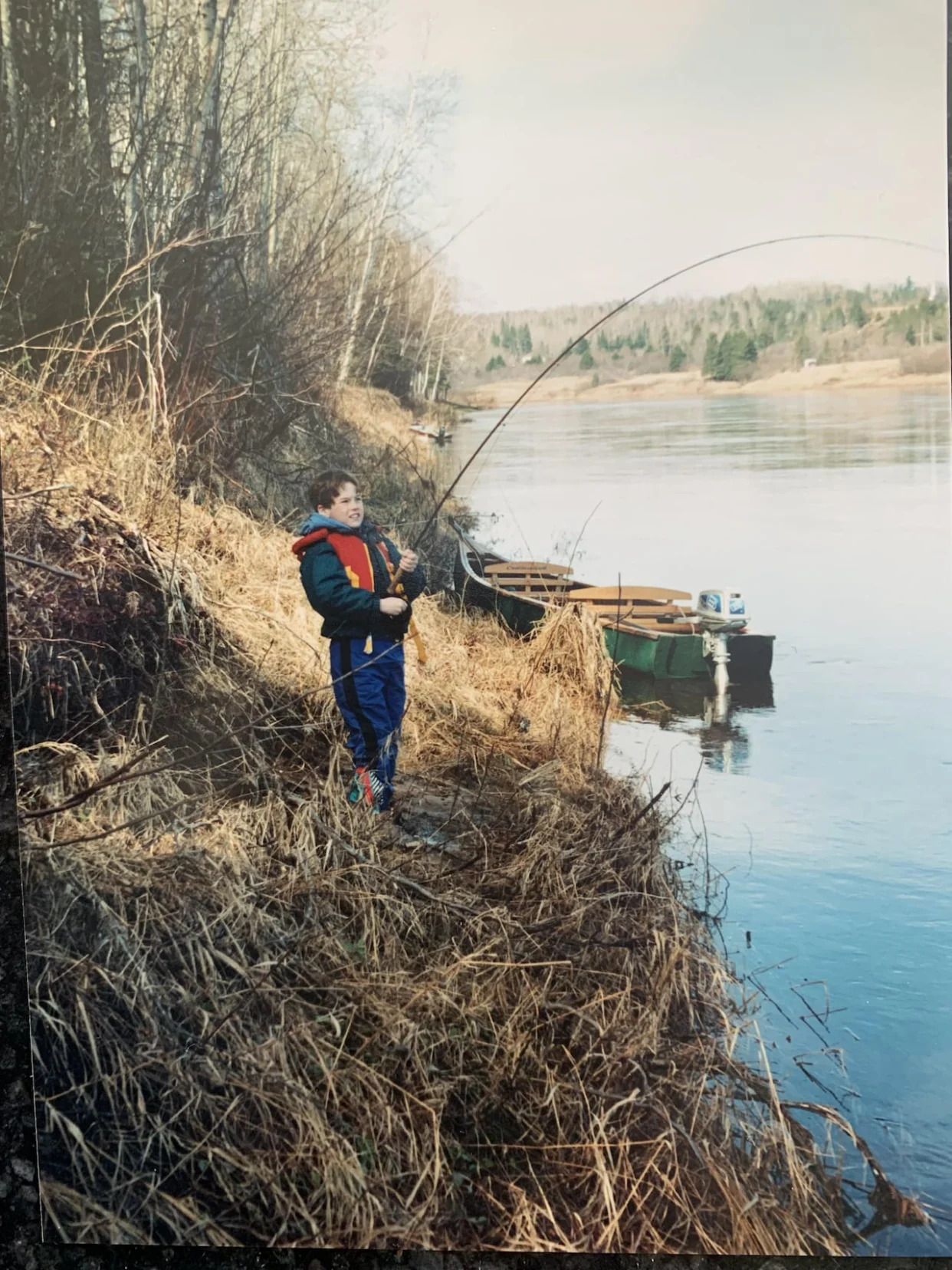
Young Nick Hawkins fighting a salmon on the Miramichi River. (Submitted by Nick Hawkins - image credit)
As a child fly fishing on New Brunswick's renowned Miramichi River, Nick Hawkins used to daydream about being able to peer under the tea-coloured water and see where the salmon were.
When he hooked one and briefly held it in his hands before releasing it again, he imagined what that fish may have seen and experienced on its migration to sea and back again. A month earlier, it could have been chased by orca whales off the coast of Greenland, he mused.
Hawkins has been "completely obsessed" with salmon ever since.
"Atlantic salmon, and salmon in general, are really for me like everything that it means to be wild and everything that I love about the natural world, kind of encapsulated into into one species," he said.
Now, after living in Halifax and Ecuador, filming pumas, great white sharks and many other plants and animals for the likes of Disney+ and Apple TV, the 35-year-old wildlife cinematographer and biologist has moved back to the Fredericton area and received an infusion of cash to help realize his boyhood dream.
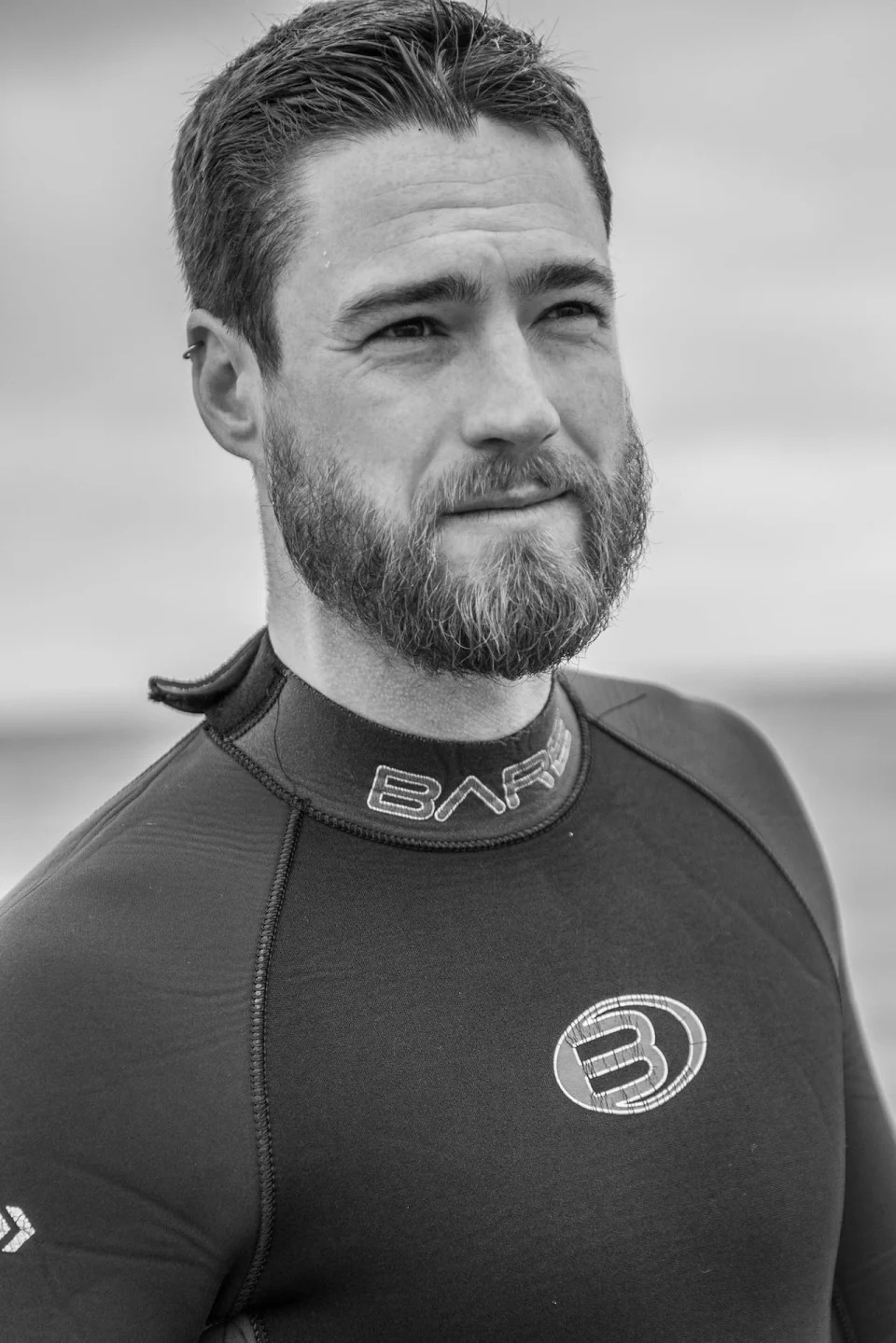
Nick Hawkins
Nick Hawkins grew up in Kelly Creek, near Fredericton, and studied biology at the University of New Brunswick. After writing about science and natural history in magazines, he got into wildlife cinematography about six years ago. (Submitted by Nick Hawkins)
Hawkins is one of nine winners of 2024 grants from the Trebek Initiative, named for the late quiz show host Alex Trebek.
He's getting $97,674 from two organizations that Trebek supported, the Royal Canadian Geographical Society and National Geographic Society, to film the migration of Atlantic salmon — "from their home rivers in Canada to their feeding grounds in the icy fjords of Greenland" — and to document "the passionate efforts of those trying to reverse the species' precipitous decline."
According to the Trebek Initiative website, the grants are meant to "ignite the passion to preserve."
Hawkins thinks salmon is a great species to target for conservation.
Measures to protect salmon also protect a broad range of habitats, he said, from freshwater to estuaries, in the Gulf of St. Lawrence and the open Atlantic Ocean.
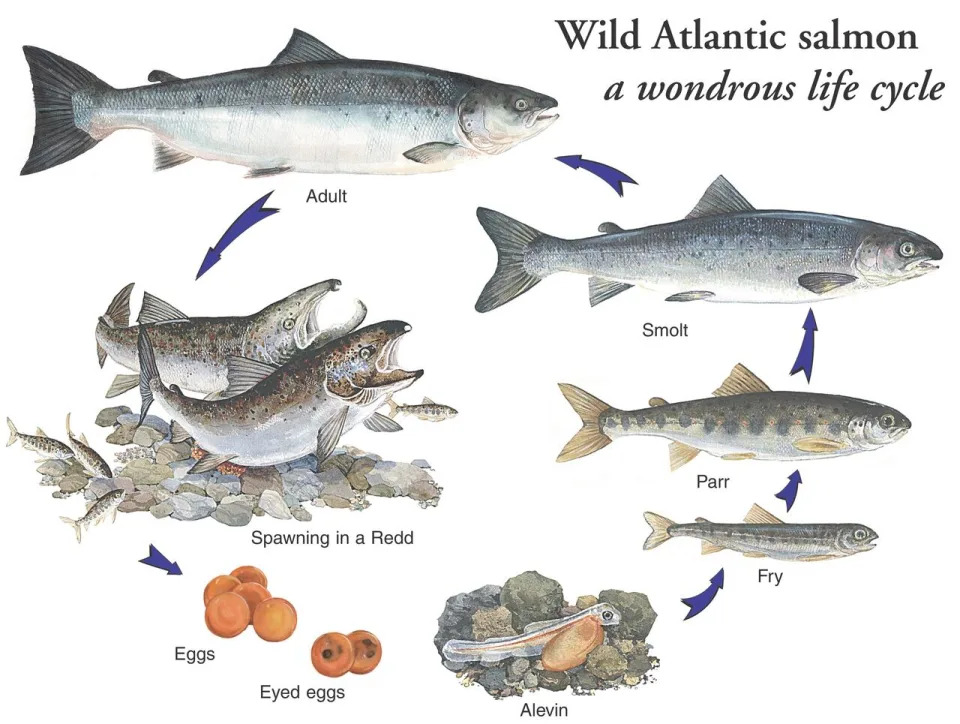
Like many Canadian kids, Hawkins learned something of the salmon life cycle in school, where wall posters showed life progressing from eggs in a riverbed, to parr, then smolt that go out to the ocean and adult salmon that return to the same river, two to four years later. Atlantic salmon enter rivers in eastern Canada in spring and early summer. They spawn in fall. Young fish migrate out to the ocean in May.More
Like many Canadian kids, Hawkins learned something of the salmon life cycle in school, where wall posters showed life progressing from eggs in a riverbed, to parr, then smolt that go out to the ocean and adult salmon that return to the same river, two to four years later. Atlantic salmon enter rivers in eastern Canada in spring and early summer. They spawn in fall. Young fish migrate out to the ocean in May. (Submitted by Atlantic Salmon Federation)
He'll start out trying to capture the earliest stages of salmon life in some of the clearest rivers on Quebec's Gaspé Peninsula.
Then, he hopes to do some interviews in Miramichi and Restigouche with people who are working on salmon projects.
The most ambitious part, said Hawkins, will be trying to find salmon in the ocean, where they basically sink to the bottom of the food chain — and become prey for seals, sharks and whales.
It will be like trying to find a needle in a haystack, he said.
The crew will be small — just Hawkins and one or two other people — so they can react nimbly as opportunities arise.
They're planning to spend two years filming because of the unpredictability of weather and wildlife.
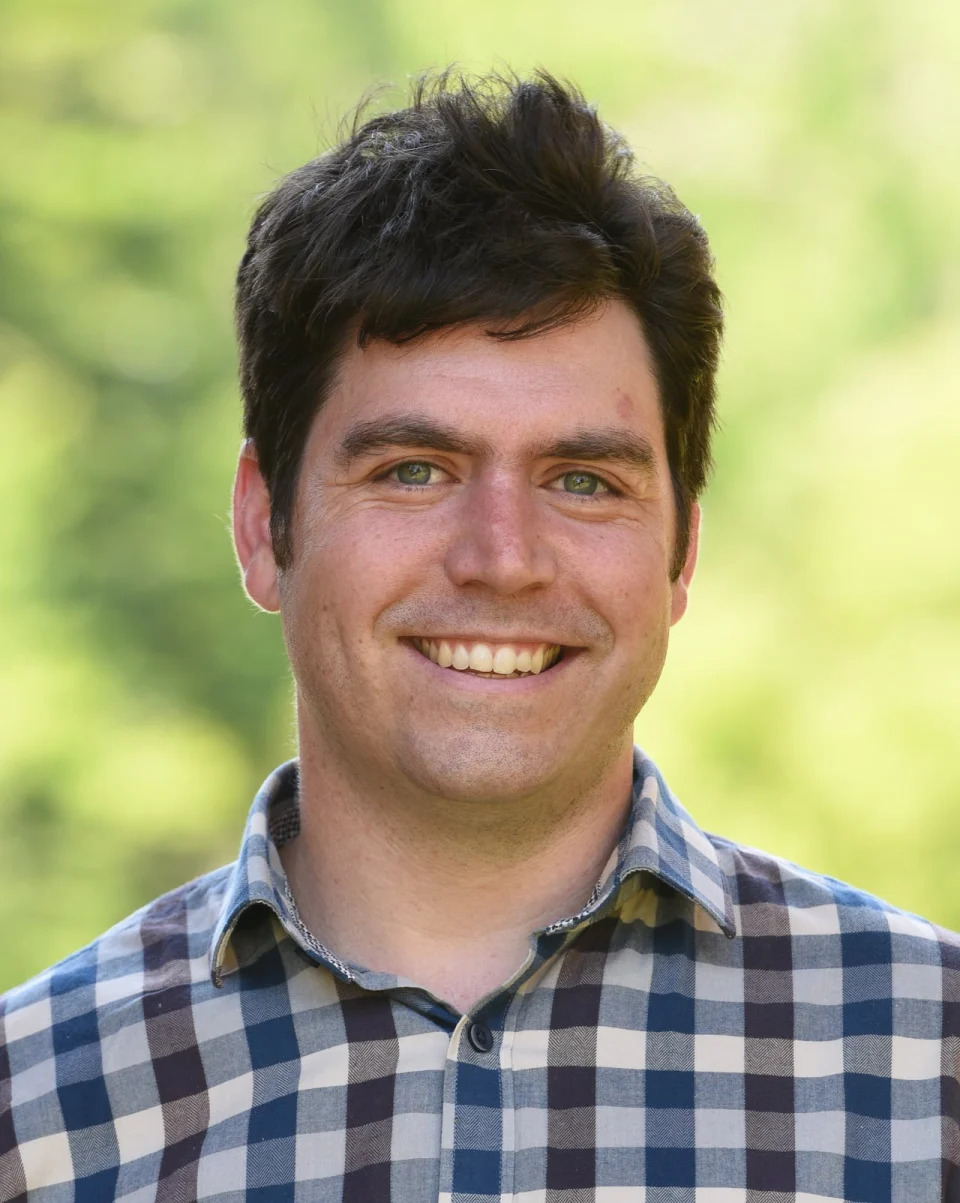
Neville Crabbe is the Director of Communications for the Atlantic Salmon Federation
Neville Crabbe is the director of communications for the Atlantic Salmon Federation. He hopes this new film project will also show that things aren't all 'doom and gloom.' (Tom Moffatt/Atlantic Salmon Federation)
Hawkins will be aided by the Atlantic Salmon Federation.
"Public awareness and education are key ingredients to effective conservation and big, super-high-quality projects like this are what we need to be doing," said federation spokesperson Neville Crabbe.
A big part of the Salmon decline has been attributed to their their time at sea.
"These fish are leaving the rivers and they're not returning. It's certainly a hope of mine that this project will help reveal some of what the risks are," said Hawkins.
"When they get into the ocean they just disappear, and there's so many threats that they can potentially face out there."
The big known threats to Atlantic salmon, as summarized on the Trebek Initiative website, are overfishing, habitat degradation, open-net pen aquaculture and climate change.
Crabbe hopes this new film project will also show that things aren't all "doom and gloom."
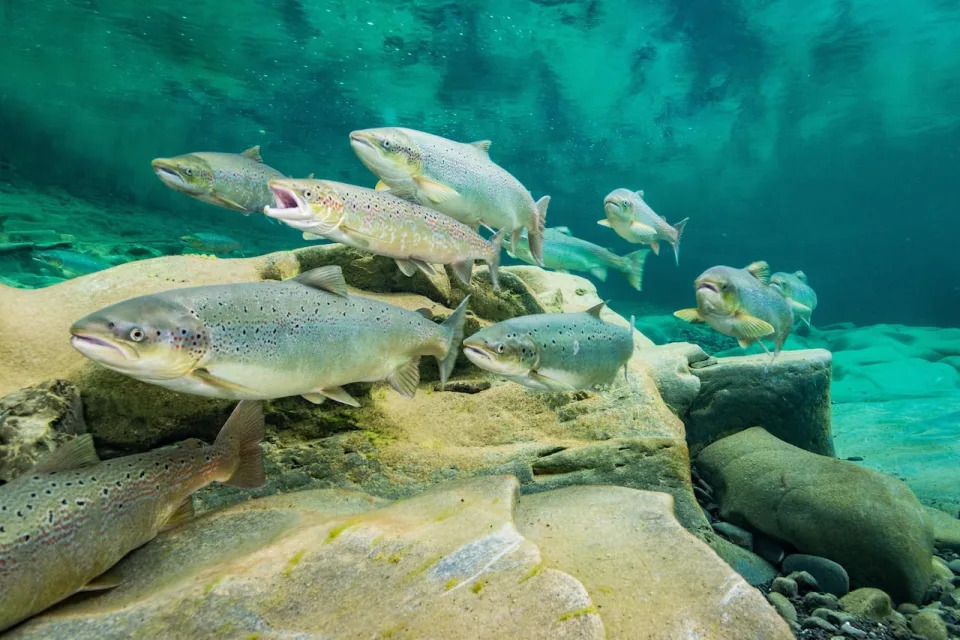
Atlantic salmon in Gaspé, Quebec.
Atlantic salmon in Gaspé, Quebec. (Submitted by Nick Hawkins)
Since the early 1970s, Atlantic salmon populations have declined significantly.
Adult returns to North American rivers have rebounded by 30 per cent since the early 1990s, when commercial fisheries were closed and other conservation measures were introduced, Crabbe said, citing federal fisheries department data.
And scientists actually suspect that warming conditions from climate change are making freshwater habitats more favourable for Atlantic salmon in Greenland, he said.
Fishermen in Greenland have reported seeing salmon in estuaries at odd times of year, he said — even close to shore in winter and beyond the Kapisillit River, which has the one known established Atlantic salmon population in that country.
Atlantic Salmon Federation researchers collected water samples from five rivers near Qaqortoq, Greenland, last fall, Crabbe said, and those are being analyzed for any Atlantic salmon DNA.
"If these fish are indeed moving north and establishing themselves on places like Baffin Island, West Greenland, northern Labrador — beyond where they've traditionally been established — then for [the Fisheries and Oceans, Atlantic Salmon Federation] and other players in wild Atlantic salmon conservation, we know we have to shift our focus to some new areas."
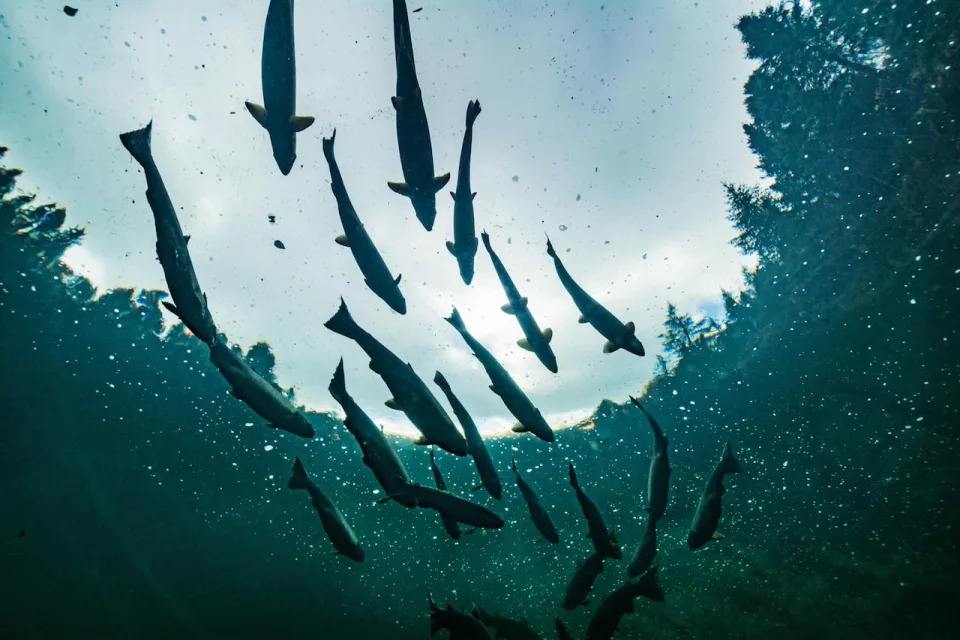
Salmon photographed in Gaspé, Quebec.
Salmon photographed in Gaspé, Quebec. (Submitted by Nick Hawkins)
The other pressing questions for the federation include what routes Atlantic salmon take back to eastern Canada and what factors influence that migration, said Crabbe.
Federation researchers, in partnership with Fisheries and Oceans Canada and the American National Oceanic and Atmospheric Administration, have tagged more than 300 adult salmon off the west coast of Greenland over the last several years, he said.
Those fish are now on their way home and their tags are programmed to release in late April or early May.
The tags are expected to float up and transmit daily movement data, showing where in the North Atlantic they spent the winter months and how and when they returned home.
Oceanographers from Fisheries and Oceans in Quebec are helping with the analysis, said Crabbe.
From preliminary data and early observations, the fish are ranging further south and east than expected, he said.
A big component of Hawkins's project is to gather visuals that organizations like the salmon federation can use to promote the continuation of their research.
Hawkins and his longtime creative partner Tom Cheney accompanied federation researchers last fall in Greenland communities where a salmon fishery occurs and got some unbelievable footage for their grant application, said Crabbe.
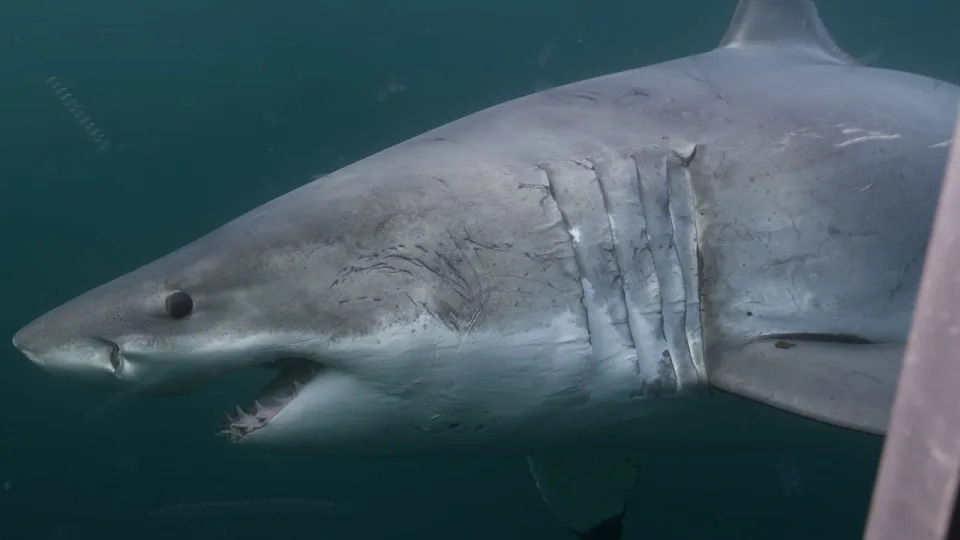
These incredible predators are a sign of a healthy ocean ecosystem and are hopefully here to stay.
Hawkins has filmed wildlife all over the world, including great white sharks for a recent project off the coast of Nova Scotia for CBC. Being in the water with a 20-foot shark was exhilarating, he said, but he’s just as excited about this salmon project. (Nick Hawkins)
Hawkins plans to return this fall to do some diving in deep fjords and will possibly gather other video by remotely operated underwater vehicle and by towing a camera behind a boat.
He wants to see how many salmon are down there and what they're up to.
He'll be using a kind of scuba gear that recycles air so he can blend into the river bed without making bubbles that disturb the fish.
You have to get within about a metre for good underwater images, said Hawkins.
He hopes his work will raise the profile of the East Coast species, which is generally overshadowed by West coast species, such as chinook or sockeye.
But Hawkins will also be working on a concept for a longer film.
"There's so much we don't know about Atlantic salmon, as … with much of the natural world.
"I hope that we learn some something along this journey"
No comments:
Post a Comment